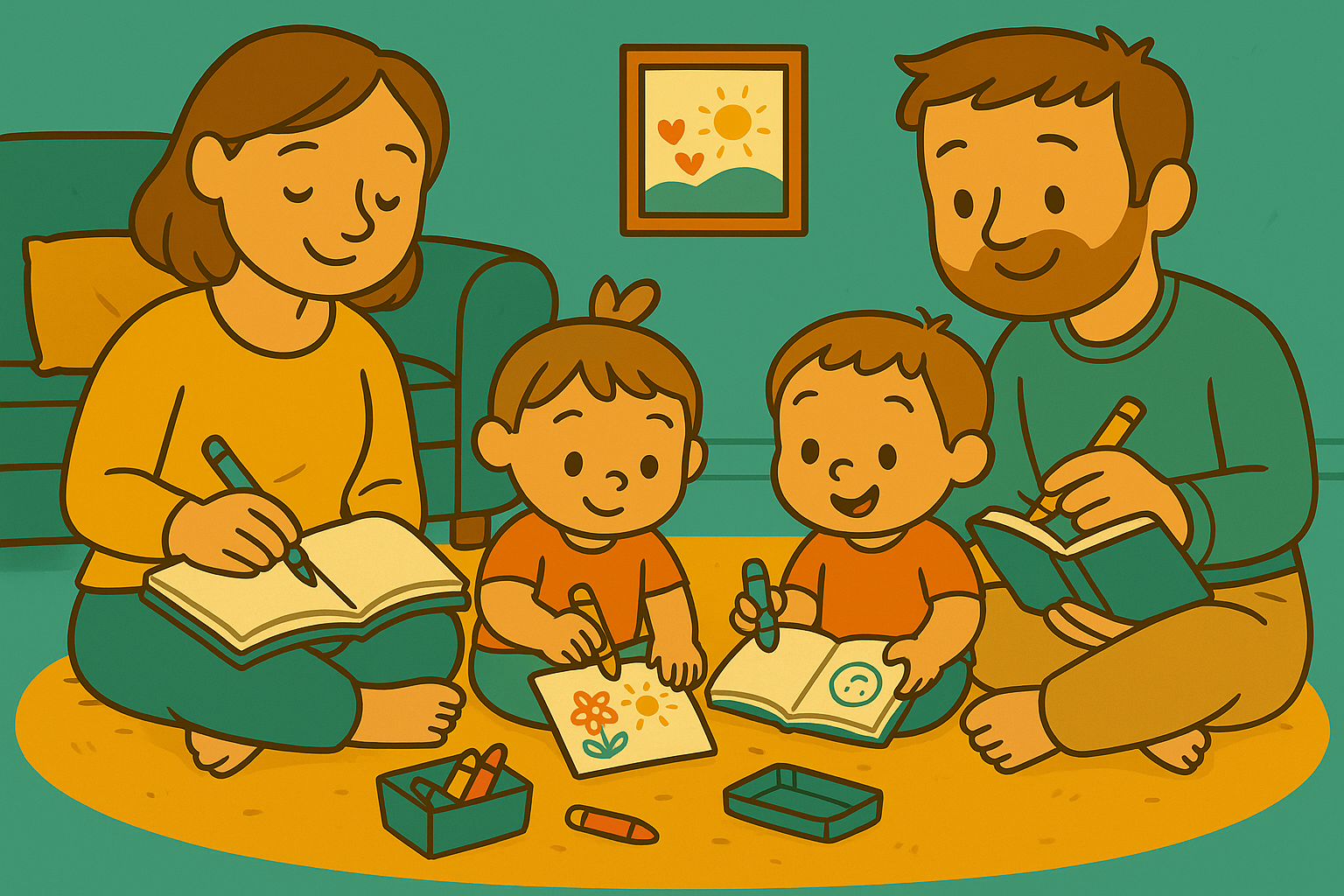Family Journaling: Reflecting on Daily Gratitude
Family Journaling: Reflecting on Daily Gratitude
Gratitude is more than a polite habit — it’s a powerful lens that changes how children see their day, themselves, and others. When gratitude becomes part of daily family rhythm, children begin to notice small joys, cope with challenges more effectively, and reflect on feelings rather than react to them. Family journaling offers a gentle, meaningful way to do this — not as a demanding task, but as a calming daily ritual.
Family journaling isn’t about perfect writing. It’s about slowing down. It’s about helping children process their experiences, spot moments of kindness, and gain emotional insight before the day ends. By building this reflection into daily routines, families create space for connection and growth — one page at a time.
Why Family Journaling Works
Journaling gives children a space to process their thoughts. Instead of letting worries or frustrations build up, journaling helps emotions settle into words, drawings, or reflections. Over time, children become better at naming their feelings — a major step toward emotional regulation.
Benefits of family journaling:
Encourages emotional awareness
Supports healthy stress relief
Builds confidence and self-expression
Improves memory and focus
Creates bonding opportunities
Strengthens gratitude and empathy
Journaling is not about recording a perfect day — it’s about understanding the day we had.
Choosing the Right Time for Journaling
Journaling works best when tied to an existing routine. It doesn’t need to take long — just a few minutes done consistently can have a lasting impact. Evenings often work well because they naturally mirror reflection and closure.
Good journaling windows:
After dinner
Before bedtime
Before brushing teeth
As part of a Restorative Evenings: Family Reflection and Gratitude Practices flow
During quiet time after school
The key is predictability — just like in The Role of Predictability in Reducing Childhood Anxiety, consistency builds comfort.
Types of Family Journals
A journal doesn’t need to be complex. Different formats support different needs and ages, allowing children to participate at their own level.
Options to choose from:
Shared family notebook
Individual notebooks with similar prompts
Printable pages with visual aids
Gratitude jar with written notes
Drawing-based journal for younger children
Digital journal with photo entries
Children engage more when journaling feels accessible — not demanding.
Using Prompts to Inspire Gratitude
Children often need guidance to reflect. Prompts offer direction without pressure and help children notice small details they may have otherwise missed.
Simple journal prompts:
What made you smile today?
What was harder than expected?
Who helped you today — and how?
What are you proud of?
What felt different today?
What do you want to remember tomorrow?
Prompts ignite curiosity — not obligation.
Journaling Without Writing
Young children — or tired children — may not want to write. That doesn’t mean journaling isn’t possible. Expression can happen through drawing, stickers, photos, or dictation.
Non-writing journaling options:
Draw a “favorite moment”
Use stickers to show emotions
Circle pictures that match feelings
Tape a photo or leaf from the day
Parent writes what child says aloud
Just as explored in Teaching Kids the Concept of Time Through Routine, visuals help children process experiences they can’t yet verbalize.
Family Journaling as a Connection Ritual
Journaling can be communal — not just individual. Shared journaling can foster connection, emotional safety, and sibling empathy (mirroring themes from Family Rituals That Strengthen Sibling Bonds).
Ways to journal together:
Sit in a circle and draw quietly
Take turns sharing one moment
Write shared goals for tomorrow
Invite siblings to add a sticker or word
Use a “feelings card” before writing
Journaling becomes more meaningful when it also becomes relational.
What to Do When Children Resist
Some children may initially refuse journaling. That usually means they need more freedom — or a different format. A journal should feel like support, not homework.
Try adjusting:
Offer drawing instead of writing
Use sillier prompts for mood boosting
Let the child design their own journal page
Share your own journal entry first
Use voice recording instead of paper
If journaling feels optional, children engage more openly.
Turning Journals Into Emotional Growth Tools
Over time, journal pages become evidence of growth — emotional milestones, problem-solving, bravery, and personal insights. Revisiting old entries helps children see how far they’ve come.
Reflection ideas:
Notice patterns (“I was worried that day — but look what happened!”)
Track challenges handled well
Celebrate small victories
Re-read happy memories
Observe changing emotions
Modeling Gratitude as a Caregiver
Children learn best through example. When caregivers journal, children understand that reflection isn’t just for kids — it’s a lifelong skill.
Try:
Reading part of your journal aloud
Sharing something you learned that day
Writing beside your child quietly
Naming something you struggled with
Modeling vulnerability gives children permission to explore their own inner world.
Keeping Journaling Simple and Consistent
Perfection is the enemy of consistency. The purpose of journaling isn’t to create polished entries — it’s to build emotional rhythm. Even two sentences or one drawing counts.
Tips for sustainability:
Keep the journal in one consistent spot
Use five-minute timers
Create one-page templates
Limit prompts to one per night
Rotate roles: reader, drawer, sharer, listener
Routine protects purpose — even on busy days.
Journals as Emotional Memory
As pages fill over time, children learn something powerful: Their feelings matter. They learn that good moments should be noticed — and hard moments can be understood. They learn that family makes space for reflection. And that growth happens quietly, one entry at a time.
With journaling woven into routine, gratitude stops being an exercise — and becomes a way of seeing the world.
This content is for educational purposes and is not a substitute for professional medical or psychological advice.
Popular Parenting Articles


